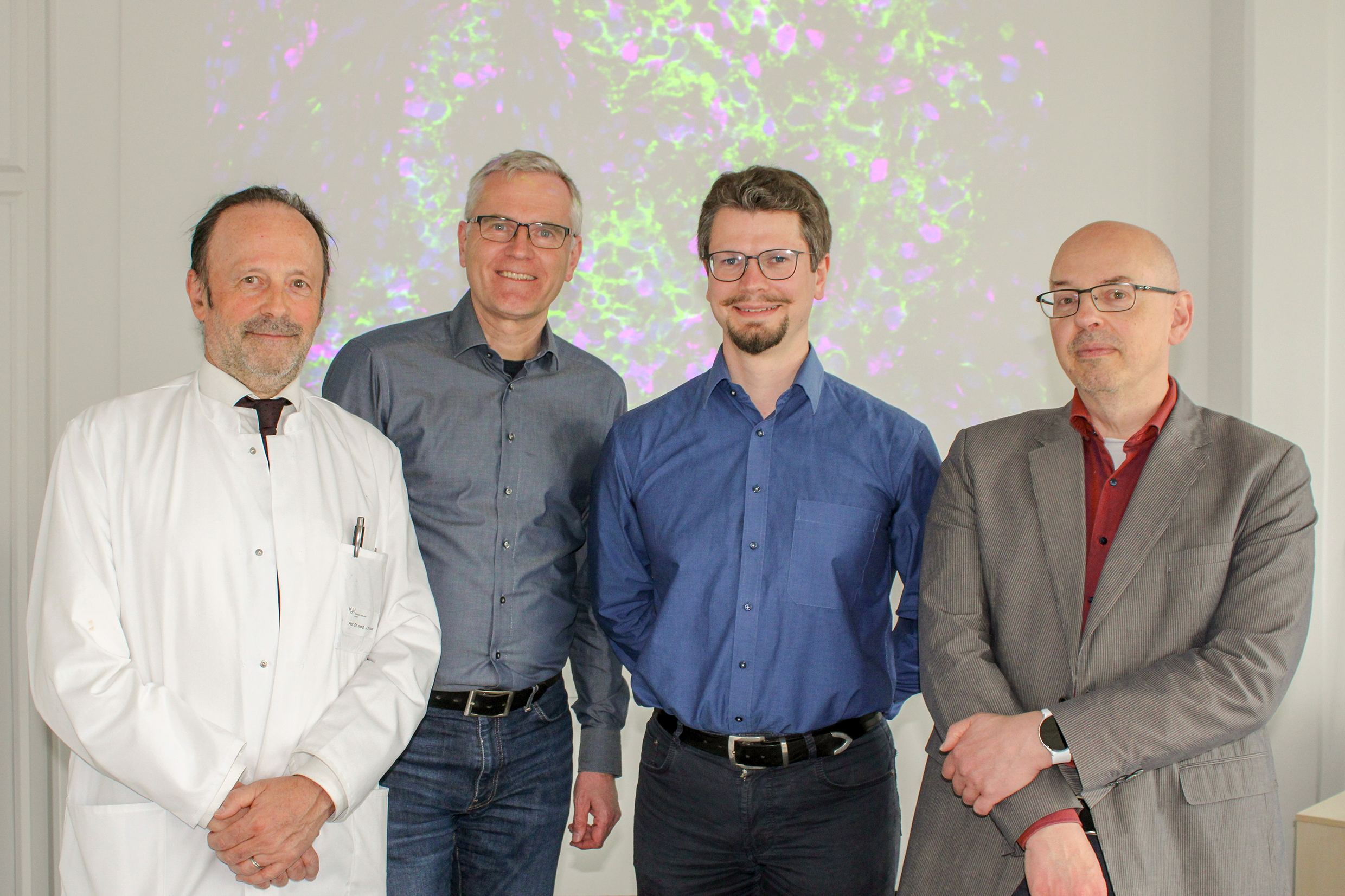Feature combination of Siglec-16 and polysialic acid increases survival in patients with glioblastoma

You can find a photo here. It shows, from left, Professor Dr. Joachim Krauss, Professor Dr. Herbert Hildebrandt, Dr. Hauke Thiesler and Professor Dr. Christian Hartmann in front of the image of an immunostained sectional preparation from a glioblastoma. The polysialic acid on the surface of the tumour cells (green) in contact with the tumour-associated macrophages (TAM, magenta) can be seen. The nuclei of the cells are coloured blue. Copyright: Maike Isfort / MHH
10.05.2023
Glioblastomas are malignant brain tumours with a poor prognosis because they usually do not respond to common cancer therapies. One reason for this is that the tumour cells have developed mechanisms to evade immune defence. Even more: certain cells of the innate immune system, so-called tumour-associated macrophages (TAM), are influenced in such a way that they not only do not attack the tumour cells, but even stimulate tumour growth.
Researchers at the Institute of Clinical Biochemistry at the Hannover Medical School (MHH), in collaboration with specialists from the Neuro-oncology Centre led by Professor Hartmann from Neuropathology and Professor Krauss from Neurosurgery, as well as with partners from the University Medical Center Göttingen (UMG), are now demonstrating a new mechanism that improves survival in glioblastomas. The cross-site research under the umbrella of the Neuro-oncology Working Group of the Comprehensive Cancer Center Lower Saxony (CCC-N) was able to prove that patients with glioblastoma survive longer after resection of the primary tumour if the tumours produce a factor called polysialic acid and at the same time their TAMs have an immune receptor called Siglec-16 that recognises polysialic acid. The results were published in the renowned journal Clinical Cancer Research.
Tumour-inhibiting effect
"With the trait combination of Siglec-16 and polysialic acid, we observed a tumour-inhibiting effect," says Professor Dr Herbert Hildebrandt, project leader in the DFG-funded research group 2953 "Sialic acid as a regulator in development and immunity" and working group leader at the Institute of Clinical Biochemistry at MHH. "Through experiments on glioblastoma cells and macrophages in cell cultures, these changes could be directly attributed to the activation of Siglec-16 by polysialic acid."
"Remarkably, due to a naturally occurring gene mutation, only part of the population is able to produce Siglec-16, while polysialic acid could be detected in more than 80 per cent of the glioblastomas examined," adds Dr Hauke Thiesler from Professor Hildebrandt's research group. "A simple genetic test in combination with other factors could enable a more precise individual prognosis." Furthermore, should it be possible to mimic the activating properties of Siglec-16 with drugs, this could help to improve glioblastoma therapy.
SERVICE:
You can find the original paper here.